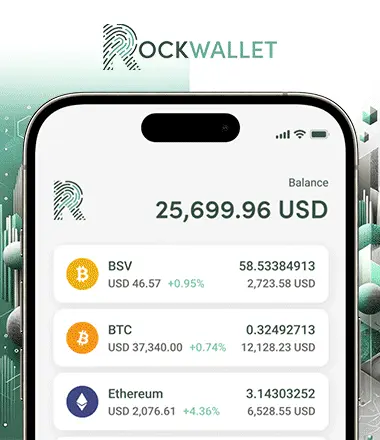Going cashless is nothing new. In fact, in much of the world, digital payment tools like debit and credit cards, chip and pin, WeChat and contactless payments have replaced the cash economy altogether. However, a whole new cashless payment method is finding its footing—bitcoin wallets. With this, consumers can purchase anything they want as easily and quickly as using social media.
What makes bitcoin wallets appealing is how they make the transaction process fast and efficient through your mobile phone. This technology is becoming widespread as well as adopted, and it paved the way for another payment method: stablecoin.
A stablecoin is a digital currency pegged to a fiat currency, such as the U.S. dollar or the Euro, making it a practical and viable choice for activities that involve payments on a blockchain network for both large and small values. Think of it as a digital wallet that is secure, fast, and affordable, while having the usability of a fiat currency.
To further understand how stablecoins are fast becoming a payment alternative and revolutionizing cashless payments, take a look at the infographic below.

Understanding Stablecoins
BTC may be the most popular digital currency out there, but its value suffers from dramatic price movements (as do other cryptocurrencies).
If you’ve checked out our Bitcoin for beginners articles, you’ll find how volatile BTC and its counterparts are. In a moment, the price can move more than 10%. The rapid and unpredictable price changes make BTC and other digital coins unsuitable for everyday transactions.
Maintaining price stability is where stablecoins find their edge. As stablecoins continue to sweep the cryptocurrency industry and emerge as a payment alternative, more individuals and businesses will find reasons to adopt them. But before diving into its real-world applications, you should get to know the various types of stablecoins.
Types of Stablecoins
- 1. Fiat-collateralized Stablecoins
Fiat-collateralized stablecoins are the most common type and the simplest structure of stablecoins. They are backed by fiat currency (a government-issued currency), like USD and EUR, as collateral to supply a certain amount of digital coins. As long as the economy of the country’s fiat currency remains stable, so will the value of the stablecoin.
Moreover, fiat-collateralized stablecoins are backed at a 1:1 ratio, or 1 stablecoin is equivalent to 1 unit of currency. That means for every stablecoin that exists in circulation, there’s a corresponding fiat currency stored in a bank account to back it up.
When exchanging cash for stablecoins, the system that manages the stablecoin will redeem the specified amount from the reserve, and the user’s bank account will be debited by the specified amount.
- 2. Commodity-collateralized Stablecoins
Commodity-collateralized stablecoins are backed by other types of assets, such as gold, other precious metals, oil, and real estate. This type of stablecoin takes advantage of a tangible asset that carries real value; some people hold them because they have the potential to increase in value over time.
With commodity-backed stablecoins, a single stablecoin can represent a gram of gold. Investing in precious metals used to be only for the wealthy, but with stablecoins, this opportunity and access are extended to the average individual.
- 3. Crypto-collateralized Stablecoins
As the name suggests, this type of stablecoin is backed by other digital currencies, like Ethereum (ETH) or other tokens. This model runs through paired coin systems. Often, crypto-backed stablecoins are supported by more than one token for optimum risk distribution since the risk of price fluctuations is higher for one cryptocurrency compared to a group of cryptocurrencies.
For instance, to get $1,000 worth of crypto-collateralized stablecoins, you might need to deposit $2,000 worth of ETH as reserves. Users will be required to stake and lock-up the number of coins into a smart contract before the stablecoins are created and sent to the user’s wallet. Frequent monitoring and audits are required to maintain price stability.
- 4. Non-collateralized Stablecoins
Also called algorithmic stablecoins, no collateral or reserve backs this model. Instead, it is collateralized by a type of self-sustaining economic system, like a central bank, to maintain price stability. This means that as the demand for stablecoins grows, new tokens are created to bring the stablecoin supply back to its normal level.
Since this model is completely independent and not backed by any asset, it is a decentralized stablecoin in its purest form. Even if a fiat currency fluctuates or the crypto market crashes, this model will remain stable and survive the crash.
Real-world Applications of Stablecoins
Apart from having the potential to be used like any other currency for shopping and transferring funds, below are more practical uses of stablecoins.
- Faster and more affordable remittances
Currently, migrant workers utilize international financial services to send money to their families and loved ones. Usually, the process takes a while and comes with high fees. Stablecoins can be a viable alternative for money remittances because transactions are instant and costs are low.
Migrant workers and their families can use a digital wallet to receive stablecoins without the risk of price volatility, a common problem with cryptocurrency transactions.
- Foreign aid
Recently, President-elect Juan Guaidó of Venezuela partnered with Circle (USDC), a fiat-collateralized stablecoin backed by the U.S. dollar. The U.S. government is reportedly planning to use the USDC stablecoin to provide foreign aid in Venezuela.
The U.S. Federal Reserve and Treasury Department plan to give funds to the Guaidó administration, which will utilize the funds to mint USDC. After which, the USDC will be released to a crypto exchange where it will be distributed to Venezuelan medical workers and locals through digital wallets. The recipients can withdraw the funds as their local currency at the free market rate.
- Protection from the dropping value of a local currency
Building off of the example above, since Circle’s USDC is backed by U.S. dollars, it does not suffer from the Venezuelan Bolivar local currency’s price crashes. If a country’s local fiat currency is crashing in value, the citizens can quickly exchange their currency for a fiat-backed or commodity-backed stablecoin to alleviate their financial suffering and prevent losing any more of their savings.
Get Ready for the Next Big Thing
Stablecoins are here and making their presence known. Sooner or later, they will change the way people view instant payments. Even when the biggest cryptocurrencies crash and struggle to pick back up again, stablecoins, and the blockchain technology they’re based on, can manage to survive and flourish since it’s the closest thing the world has to fiat currency and commodities.
Are you interested in learning more about Bitcoin and the cryptocurrency industry? CoinGeek is the perfect place for beginners. Head on over to Bitcoin 101 to get started!
Recommended for you
Tiny payments are changing the expenses landscape. Micropayments and nanopayments are not entirely new concepts and practices. But with the
You can earn money when you explore the world of Bitcoin and understand its intricacies. Once you get the hang

 07-04-2025
07-04-2025 



